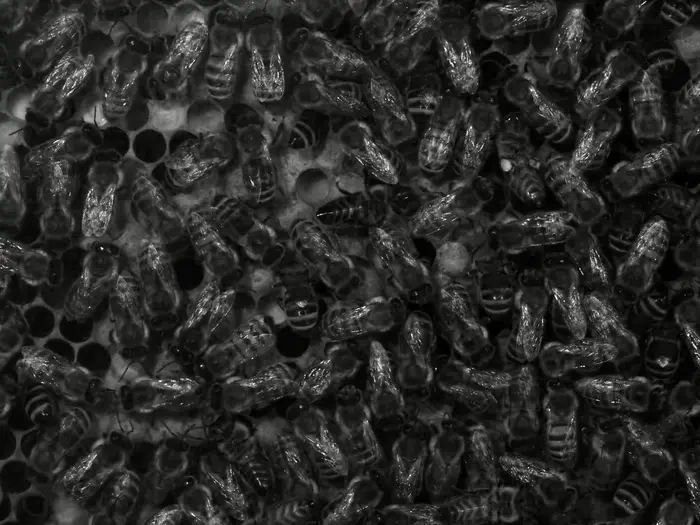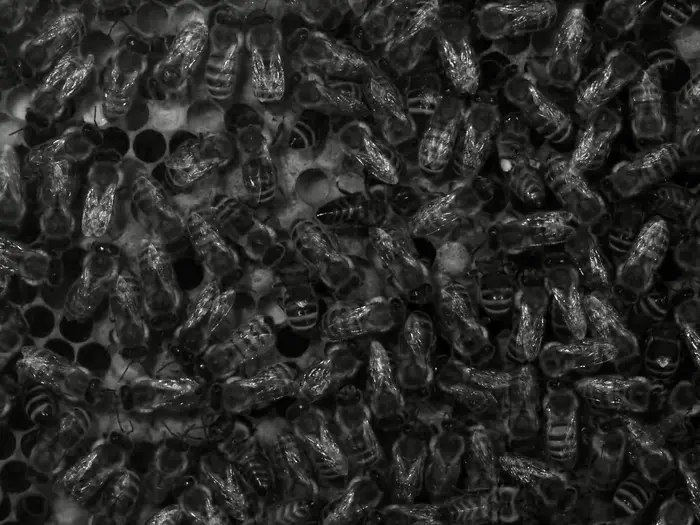Scientists have discovered how honeybees can decipher dances by their hive mates that relay directions to food.

Credit: Anna Hadjitofi
Scientists have discovered how honeybees can decipher dances by their hive mates that relay directions to food.
The findings reveal how, in the complete darkness of the hive, each bee uses its antennae to help interpret the information communicated through the dances.
It has been known for decades that honeybees do so-called waggle dances, in which their movements and orientation on the honeycomb signal the direction and distance to food outside the hive. However, until now, it was unclear how the bees gathered around a waggle dancer make sense of the information.
Gaining greater insights into how bees communicate could help scientists to better understand the effects of issues such as habitat loss and pesticide use on the insects’ ability to find food, researchers say.
A team from the University of Edinburgh made the discovery by studying a colony of honeybees at an apiary at the University and using computational models to mimic their brain processes.
Researchers from the University’s School of Informatics filmed the insects in slow motion and high resolution under infrared light. This enabled them to track the position of the antennae of the surrounding bees in fine detail during each waggle dance – which are otherwise a blur to the naked human eye.
The researchers observed that bees alter the position of their antennae, which are touched repeatedly by the dancer as it waggles by, based on the angle of their body relative to the dancer.
The team realised that the bees could decode dances from any angle, or even from constantly changing positions, by combining signals picked up by their antennae with their own sense of gravity. However, this requires the bee to accurately add together the two angles detected from its two sensory systems.
Using a computer model that replicates known brain circuits in the bee, the researchers showed that fewer than one hundred neurons are needed to integrate this information and recover the angle and the distance to the food being signalled in a waggle dance.
The findings are published in the journal Current Biology. The study was supported by the European Research Council, the Janet Foreman Fund and the Eva Crane Trust.
PhD student Anna Hadjitofi, of the University of Edinburgh’s School of Informatics, said: “This is particularly exciting because it unveils a remarkably elegant neural mechanism employed by bees to decipher complex information with minimal resources”.
Professor Barbara Webb, also of the University’s School of Informatics, added: “Understanding how the small brains of insects carry out such sophisticated calculations can help us design more compact and energy efficient computers”.
For further information, please contact: Corin Campbell, Press and PR Office, +44 (0)7881 004402, [email protected]
Journal
Current Biology
DOI
10.1016/j.cub.2024.02.045





